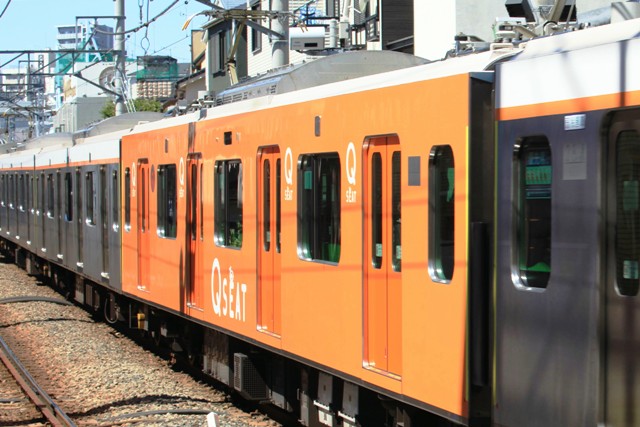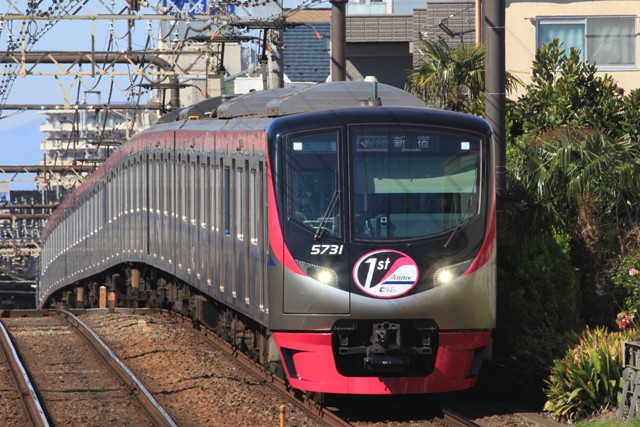7808F of the EMU Hokuso 7800 series
I completely thought that I had already introduced all of the trains in the Tokyo metropolitan area in this blog but there are still some left. Today, I am going to show you one of those models.
The EMU Hokuso 7800 series is one of the main fleet on Hokuso Railway. It was originally launched in 1991 as Keisei's commuter train named the 3700 series. A total of 132 units were built by Nippon Sharyo and Tokyu Sharyo. In 2003, 3 sets, 24 units, of the 3700 series were moved from Keisei Electric Railway to Hokuso Railway according to the leasing contract. It was, then, renamed as the Hokuso 7800 series. The body stripes were also changed from red and blue to dark blue and light blue. Hokuso also has the same type of trains named the 7300 series, but the 7300 series is Hokuso's own rolling stock. In other words, the Hokuso 7800, 7300 and Keisei 3700 series are sister trains, which have same technical specifications.
Incidentally, Hokuso is a local railway company in Chiba Prefecture. It was established in 1972 for the carriage of the Chiba Newtown residents. The route extends to the western part of Chiba Prefecture including Chiba Newtown. Connecting Keisei-Takasago and Imba-Nihonidai stations, its route length is 32.1 kilometers. The track is double and electrified. The gauge size is 1,435 millimeters. The electric system is 1,500 V overhead. Hokuso trains are directly operated onto the Keisei, Toei-Asakusa and Keikyu lines.
The EMU Hokuso 7800 series is one of the main fleet on Hokuso Railway. It was originally launched in 1991 as Keisei's commuter train named the 3700 series. A total of 132 units were built by Nippon Sharyo and Tokyu Sharyo. In 2003, 3 sets, 24 units, of the 3700 series were moved from Keisei Electric Railway to Hokuso Railway according to the leasing contract. It was, then, renamed as the Hokuso 7800 series. The body stripes were also changed from red and blue to dark blue and light blue. Hokuso also has the same type of trains named the 7300 series, but the 7300 series is Hokuso's own rolling stock. In other words, the Hokuso 7800, 7300 and Keisei 3700 series are sister trains, which have same technical specifications.
Incidentally, Hokuso is a local railway company in Chiba Prefecture. It was established in 1972 for the carriage of the Chiba Newtown residents. The route extends to the western part of Chiba Prefecture including Chiba Newtown. Connecting Keisei-Takasago and Imba-Nihonidai stations, its route length is 32.1 kilometers. The track is double and electrified. The gauge size is 1,435 millimeters. The electric system is 1,500 V overhead. Hokuso trains are directly operated onto the Keisei, Toei-Asakusa and Keikyu lines.
7818F of the EMU Hokuso 7800 series















